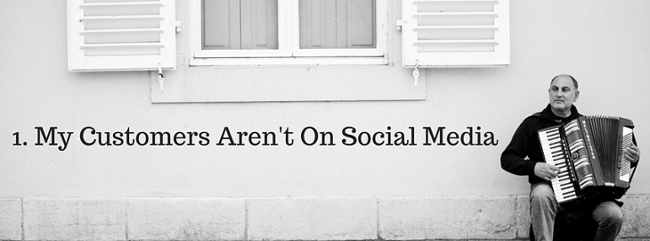
Social Selling is the big buzzword in Sales at the moment. But I can understand plenty of people who think it’s a flash in the pan. If you’ve got by in Sales for 20 years without it why would you need it now? It seems like it involves a lot of work and at the end of the day is it really going to close any deals?
Well maybe not. Social Selling perhaps isn’t the best name for the technique. At it’s core Social Selling is about creating an atmosphere advantageous to selling. Social Selling is about opening the conversation, turning every cold call in to a warm call. I can understand why a lot of people are wary of investing time and effort into what they view as an unproven Sales tactic. There are plenty of articles out there already trying to sell you on the benefits of Social Selling, I’ve written some of them!
Instead here I’m going to try and address some of the concerns I hear coming from people who are unsure about Social Selling.
Here are the 5 objections I hear most often when it comes to Social Selling.
Whether you’re B2B or B2C you should be using Social Selling. If you’re not looking for customers then you’re looking for prospects, business connections and decision makers. A lot of people think these people aren’t on Social Media, but that couldn’t be further from the truth. 86% of decision makers in businesses use Social Media at some stage of their decision process. Think about it, there’s a pretty good chance you’re on LinkedIn. Almost every professional is now in some capacity. They don’t all use it regularly or to it’s full potential, but they’re all there. It’s just like old school networking, we’ve all known people go to networking events only to spend the whole time speaking to the same couple of people they already know.
If you’re targeting a demographic that isn’t that active on Social media that doesn’t mean you don’t have to worry about Social Media. More and more retired people are finding their way on to Social Media, you’ll struggle to find a demographic that doesn’t use Social Media to some extent. This is besides the point though, because the people that influence them will be on Social Media. Twitter, Facebook, LinkedIn, they’re in the background of most people’s lives.
The final word on this point is that even if you’re sure your targets aren’t on Social Media right now, how long will that be the case? Unless you’re looking to be completely out of business within a year or two the amount of your potential clientele that can be reached via Social Selling is only set to grow. Grandma’s share recipe’s and knitting patterns on Pinterest while Millennials are more likely to Tweet at a person or company than they are to email them for a first casual enquiry.

This often comes from the Sales Team.
‘I’m expected to make 12 half-hour prospecting calls every day, spending half an hour or an hour on Social Selling means I have less time to do my job.’
The answer to this is simple and logical. What’s the outcome you’re hoping to achieve with your Sales calls? From initial Prospecting to your call and through your process the idea is to convert that person into a sale. So if you make your 12 calls a day, how many do you close? 2? 4?
We all know that one of the keys to closing a higher percentage of your calls is properly qualifying your prospects. Having as much information on hand as possible helps to close. Social Selling addresses both of these issues. Sales Teams still regularly rank prospecting as the most difficult part of their job in surveys. If you can better qualify your calls so your close rate moves from 8% to 15% are you really wasting time?
Whatever field you’re in you must already be dedicating some time to prospecting. Social Selling falls into this category and by devoting a little extra time and technique to your prospecting you can have a huge impact on your ability not only to find new prospects but also to close them. The fact of the matter is those Sales People that engage in Social Selling are more likely to hit and exceed their quotas than their colleagues that don’t.
Social Selling activities often leave a permenant footprint meaning that no time is really ‘wasted’ on the practice. When you’re curating, creating and publishing content across your social networks those pieces of content stay there. People can come back and see that you’ve been an authority for a long time. They will see your connections, your interactions and the Social Proof that you are a knowledgeable and trustworthy source.
Within a month or two Social selling practices become second nature, to the point that they slip into your day almost without notice. There are a huge amount of tools, plugins and apps out there to help you with Social Selling. It takes a small amount of time invested to begin Social Selling and once you’re up and running with it the upkeep going forward takes even less time.
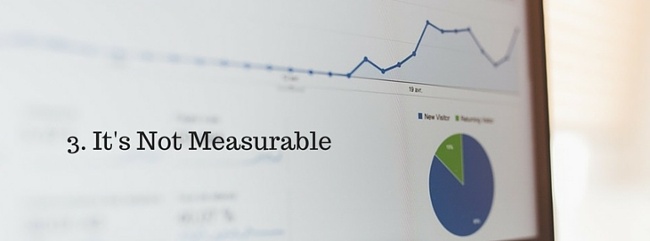
There’s a grain of truth to this objection, but only a grain of it! Ultimately you can measure your Social selling success by the increase in your sales, but obviously that kind of approach doesn’t mean much if you’re trying to assess it’s effectiveness in the short term.
To measure how you’re doing in terms of your own Social Selling efforts you can look at your LinkedIn Social Selling Index and set about improving it if it’s not at least above 65. You can also use measures like the Klout score, though this is less helpful than the LinkedIn SSI as it can fluctuate wildly depending on single instances of high interaction.
It’s important to remember with these measures that the idea is not to focus on getting the ‘high-score’ but using the score to show where you can improve. Ultimately having a LinkedIn SSI of 100 doesn’t necessarily mean you’ll be closing more deals, but if you have a high SSI then it will facilitate prospecting and closing.
If you’re using a CRM then you can utilise tracking URLs and measure where new traffic is coming from. If you see lots of new leads entering your database from your social posts then this helps to show the value of Social Selling. Social Selling is also about nurturing leads through the whole sales process, track your interactions with leads and prospects and you’ll notice an average drop in the time required to complete the sales cycle.
The final measure I like to recommend is hard to put into a graph but very noticeable. See how well received you are when you get to the point of making your sales/prospecting call. Warm leads receive these calls in a completely different way to cold calls. You’ll find it easier to pass the gatekeepers, if you’re doing Social Selling right often you’ll entirely bypass the gatekeepers you’ve spent years perfecting dodging.

This is a problem whether your Sales Team engage in Social Selling or not. It’s always been true that a Sales Person can take their prospect or client list with them. People like to deal with people and there is a chance that if your employee has a high level of rapport with customers or prospects they may go with them. This risk isn’t increased by Sociall Selling though, infact you may even manage to mitigate it by encouraging your Sales Team to use a CRM in tandem with their Social Selling efforts.
If every Lead and Prospect is put into your CRM to centralise and capture data then a Sales Team member can never ‘walk out’ with leads, you’ll have them in your database.
People like to deal with people, this is one of the foundational principles of Social Selling. However, while your Sales Team or other employees are busy building their Personal Brand they are also being a Brand Ambassador. It might seem galling to allow an employee to build up a strong personal network on company time if they then leave. In reality though, they’d be doing this anyway, just less efficiently. Having a team full of people with strong Personal Brands, that are respected as authorities on or in the industry reflects well on you as an employer.

A big part of Social Selling is curating, creating and sharing content. Another is constantly interacting with prospects, clients and colleagues. Many people in positions of authority worry that turning their employees loose on Twitter, Facebook and LinkedIn on company time with the business name associated with them could bring unwelcome consequences.
It takes a long time to build a good reputation. It takes much less time to ruin a good reputation, especially from the inside. Again this isn’t a risk that is unique to Social Selling, but it certainly could be intensified if not handled correctly. Part of mitigating this risk is having a strong Social Media Policy and making sure to train your staff. Simply pointing staff to a blog on Social Selling isn’t enough to educate them.
If you make sure your staff know what kind of content is appropriate and what is not then you have already taken the biggest step to stopping anything embarrassing happening. You should also ensure you set out interaction guidelines, simple things that mean your staff know what is expected and you have recourse should something untoward take place.
One of the advantages of encouraging personal Social Selling is that if an employee does act inappropriately it can be attributed to them and not some faceless company page. Obviously I would never advocate hanging someone out to dry, but developing a Personal Brand also entails taking on personal responsibility for it. If someone has worked hard to cultivate their professional image and it is inexorably attached to their public accounts then they are far less likely to take out frustrations online. We’ve all heard of disgruntled employees sending malicious Tweets from company accounts, would they be so quick to do so if their face was attached to the Tweet? Unlikely.
When it comes to Social Selling you have to trust your staff. If you have staff you don’t trust to act professionally in a position where they are approaching potential clients and customers then there is a problem with your hiring policy! Firm guidelines and proper training mitigate almost all of the ‘risk’ associated with Social Selling.
Related Post
Effective Facebook Marketing...
With over 600 million users, Facebook represents the single most connected platform on...
- March 1, 2011
- By Nadine Thomas
- Latest Online Trends
Monitor, Influence and Lead...
Get Actively Involved in the Outcome of Search Results Don’t take negative publicity...
- April 28, 2011
- By Rob Thomas
- ORM
Free Online Reputation...
Listen to What’s Being Said About You Online (Free online reputation monitoring...
- May 5, 2011
- By Rob Thomas
- ORM
Top Tips for Product Page...
As the internet evolves and user expectation becomes increasingly sophisticated, creating...
- May 31, 2011
- By Rob Thomas
- e-Commerce
How To Drive Sales With...
Landing pages have long been the primary tool of the web-savvy marketer. Whether the...
- June 12, 2011
- By Nadine Thomas
- e-Commerce
Top Tips for Product Page...
Your website marketing activities are geared to getting a qualified audience to your...
- June 14, 2011
- By Rob Thomas
- e-Commerce




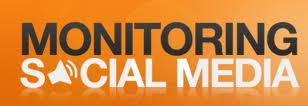
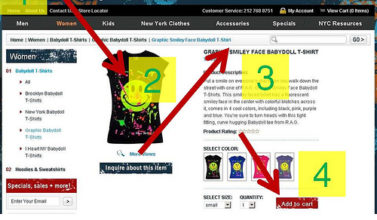
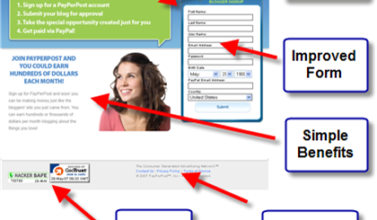
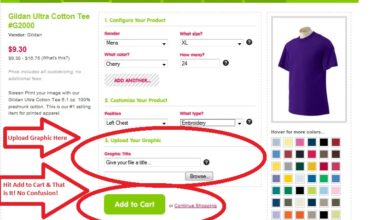




[…] from a Social Selling perspective having this data available in an easy format to review and take a qualitative approach […]